From our perspective Duluth was a missed opportunity. Jim and I opted for the Lake Superior Railroad Museum and North Shore Scenic Railroad excursion. The excursion was deadly dull even though we love everything about trains, and it didn't leave enough time to enjoy the museum.
Duluth may be a wonderful place, but the best I can say for it is that I finally tracked down the adapter I needed to transfer pictures from my camera to my computer. I found a Walgreens that was a bit of a hike from the dock, but I needed the exercise.
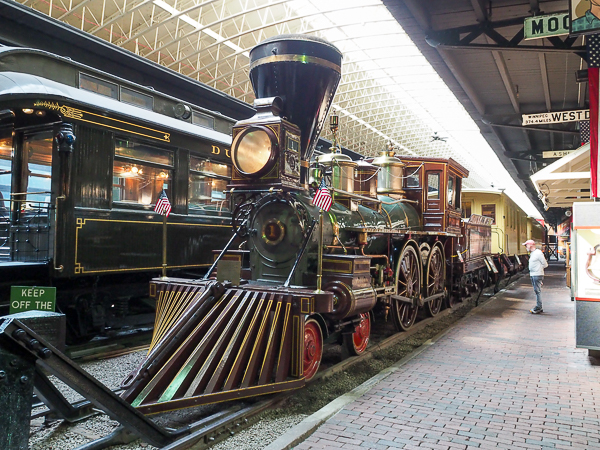
There was quite a bit of rolling stock on display at the museum and I expect it would have been a great place to explore, but because of the "scenic" excursion schedule, we didn't have the time. We also weren't given any handouts that explained what was available.
This little steam engine was called Minnetonka. There isn't a good WWW source that describes it. The best I found had the following information:
The Minnetonka, built in 1870 by H. K. Porter, Inc of Philadelphia, was one of the first locomotives owned by the Northern Pacific Railway. It was first put to work building the railway in Minnesota then in Washington state. Starting in 1886, it transitioned to logging operations until 1928 when it was abandoned near Hoquiam, Washington. After rediscovery in 1933, the Northern Pacific restored it to working condition. It is currently on loan to the museum.
The history of the Northern Pacific is replete with skullduggery and colorful characters such as James J. Hill, whom we had "met" when on our 2022 Mississippi River Cruise, and E. H. Harriman, father of diplomat Averill Harriman who developed Sun Valley.
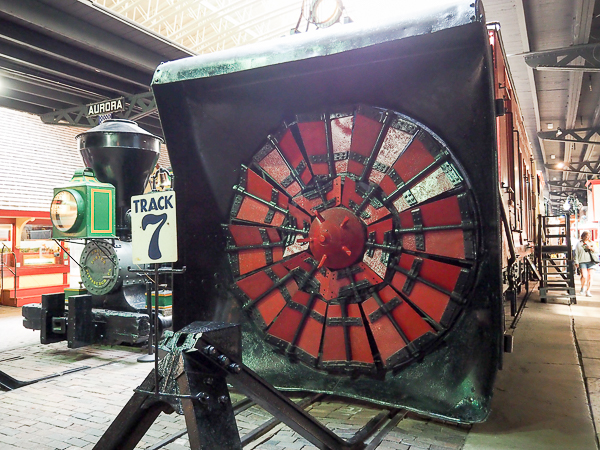
There was no place to stand to get a good picture of this track-clearning snow plow. We had seen a massive locomotive snowplow in Canada once, but this design was more effective with deep drifts because the snow was blown well away from the tracks rather than just pushed aside.
It was designed to be pushed by a single locomotive.
The plow had its own crew and power to run the wheel. They communicated with the pusher locomotive by whistles.
This particular plow, Northern Pacific #2, is the oldest known surviving steam plow. It has been designated a Mechanical Engineering Landmark.
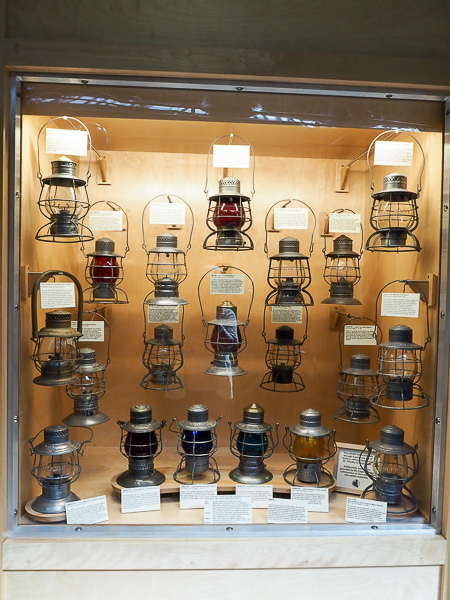
There was a neat display of antique lanterns from a variety of rail lines including the row on the bottom with an explanation of what the various colors of lanterns signified.
Jim once had similar lanterns that had belonged to his grandfather.
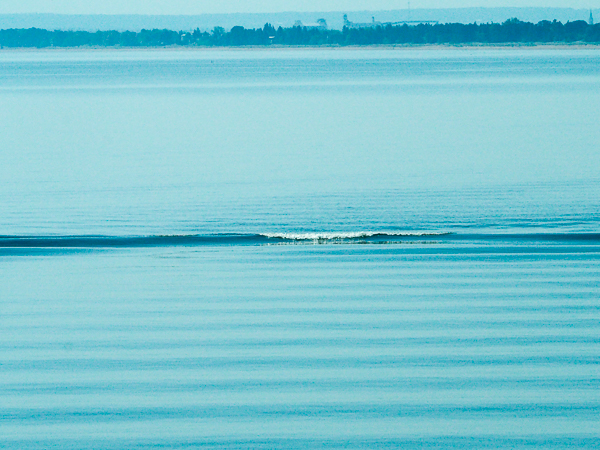
The only bit of scenery that I caught on the entire excursion was this odd standing wave on the edge of Duluth harbor. There was nothing that I could see to explain it -- no boat wake, no wind.
The closest explanation I've found since is a seiche. We were told that seiches occur in the Great Lakes -- they are the closest things to tides in those bodies of water, but this is not like a tide in any way.
It didn't go anywhere, just curled and broke where it was. A puzzlement.
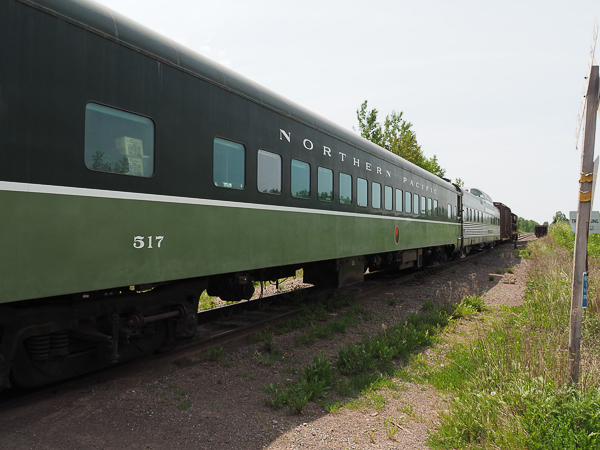
Our group rode in the dome car behind the #517 car shown here. It was hot under the dome. Many people migrated downstairs where it was cooler, but we were hoping to finally see some "scenery." No such luck.
Either the points of interest were on the wrong side of the car or the reflections off the window ruined the view or the points just weren't that interesting in the first place.
Phooey!
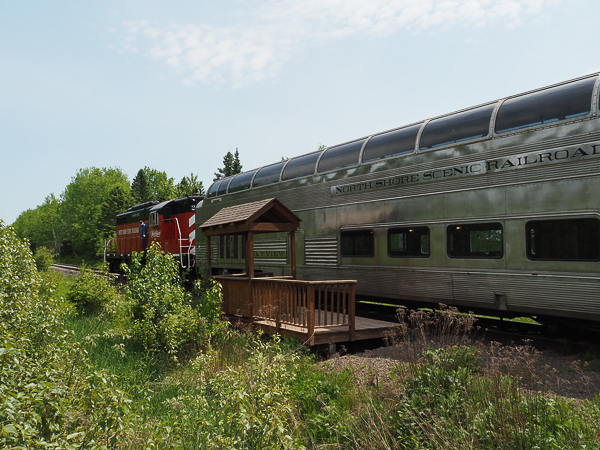
The train was to continue on to the Two Harbors Duluth and Iron Range Depot, now a museum, but it made a special stop in the middle of nowhere to let us catch our bus back to Duluth.
Although I love everything train, I was happy to leave this one behind. If you go to Duluth, visit the museum, but skip the train ride.
I had a notion of visiting the train museum in the afternoon during our free time. It was within walking distance of the ship, but I went shopping for the adapter instead.
Click your "back" button to return to the previous page or click for our picture album.